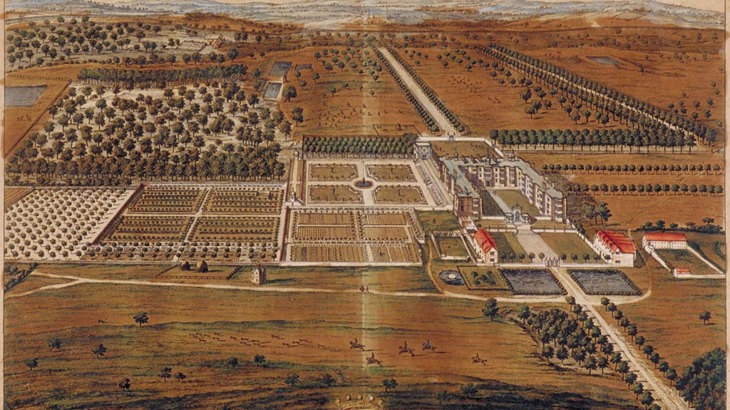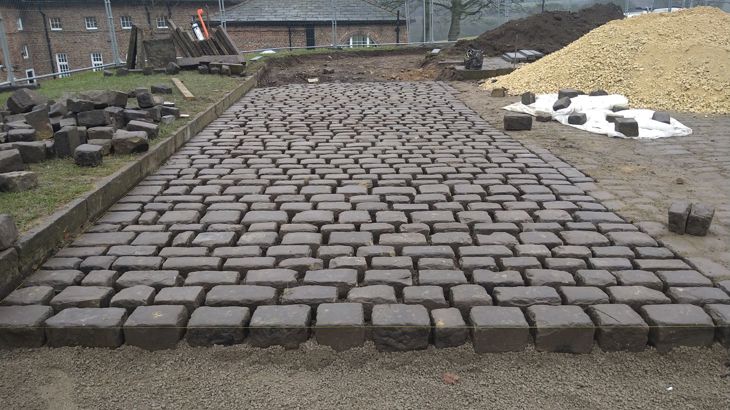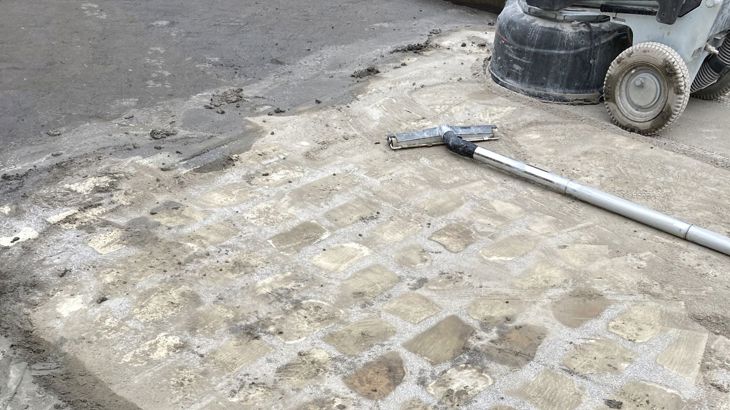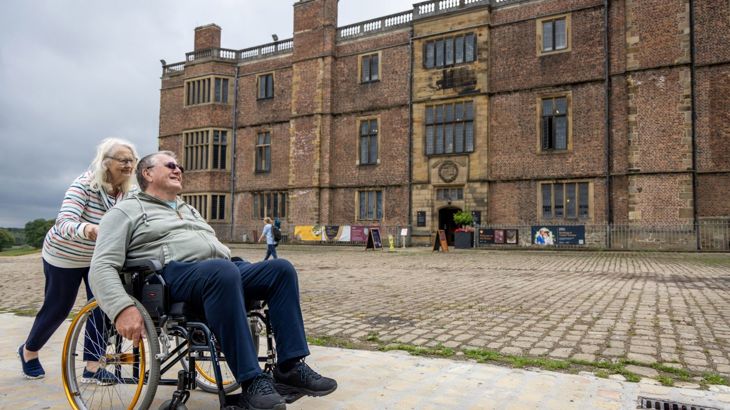In the first phase of a new route from the 16th century Temple Newsam house, near Leeds, the team worked with heritage experts to trial a technique which made a smooth path through cobblestones. And they unearthed a surprise discovery from the past.

Temple Newsam in the 18th Century. Painting by Jan Kip courtesy of Wikipedia Commons.
The cobblestone area outside Temple Newsam House near Leeds is the kind of appealing detail that helps visitors step back into the past and get immersed in the atmosphere of this 16th century manor.
But the uneven surface was a major barrier to less able visitors.
Could it be possible to maintain the character of cobbles, while making them a wonderfully smooth ride for 21st century wheelchairs, scooters and cycles?
Our Infrastructure and Network Development teams rose to the challenge.
New route from Temple Newsam to Rothwell
They worked with Leeds City Council to create a new 400 metre path sweeping through the estate.
It’s the first phase of a new accessible walking, wheeling and cycling route between Temple Newsam and Rothwell, funded by National Highways.
This involved creating an accessible strip along the 28-metre cobbled area.
Then South of the House, the route follows the lines of a former carriageway which once linked to labourers’ lodges on the East Avenue.

The cobbles were re-laid as part of the work to make them more accessible. PHOTO: Sustrans
First for Sustrans
“It was the first time the organisation had attempted making an accessible surface over cobblestones, explains Jim Yeoman, our Network Development Manager.
“We decided to re-lay and grind down the cobbles to a flat surface.”
“This maintained the attractive appearance of the cobblestones, while creating a completely smooth finish that allowed access for mobility aids, prams and non-standard cycles.”

The cobbles were grouted then ground down with a machine. PHOTO: Sustrans
Respecting the heritage
It was important that any changes that we made to the path and grounds to improve accessibility were in keeping with the historic nature of the Estate.
The house and its grounds date back to Henry VIII, although there was a building on this site mentioned in the Domesday Book of 1086.
Henry Stuart (Lord Darnley), husband of Mary Queen of Scots, was born here.
Hundreds of years later, the famous 18th century landscape gardener Capability Brown, shaped the grounds to what they are now.
Partnership work was key to success.
The teams worked closely with heritage experts at Temple Newsam House and Historic England throughout the project.
We also took advice from designers at reShaped Landscape Architecture, who had worked on a similar project on the Liverpool Waterfront, on how to make the cobbles accessible.
The teams also worked closely with heritage experts at Temple Newsam House and Historic England throughout the project.

A 28-metre strip of the cobbled area is now accessible for mobility aids, prams and cycles. PHOTO: Chris Foster/Sustrans
An unexpected archaeological discovery
The team was excited to link the new accessible cobble path to the old carriageway, which was grassed over in the 1970s.
It opened up a modern path for all along a route that would have been reserved for the rich and privileged few.
But shortly before works began, investigations by a local archaeology group revealed a surprise.
A survey conducted by South Leeds Archaeology showed there was a stable building along the former path, which probably dated back to the mid-18th century.
We commissioned CFA Archaeology to set up a watch during this time in case the construction workers unearthed any artefacts.
Diggers revealed brick foundation walls and sandstone foundations, some fragments of pottery and earthenware.
These items have been sent to a local specialist for further examination, and will eventually be stored at a local museum or archive.
On road links for the new route were important too.
To help people access the estate more easily we worked with Leeds City Council to install a safer road crossing at the southern entrance to the estate, with a new signalised crossing at Pontefract Lane.
The new route launched on 20 July.
What people said
Maria Akers, senior estates manager at Temple Newsam and Lotherton said:
“The team at Temple Newsam are really pleased with their section of this new green travel route linking the estate to communities in and around Rothwell and the wider Aire valley.
“The cycle path has been designed to reflect the gravel drive that once swept past the east side of the house. Work to the cobbled car park has made this a much less bumpy ride.”
Cath Kendall, whose husband Dave is a wheelchair user, said: ‘It’s fantastic, it’s so much easier to go over’
The first phase of the Temple Newsam to Rothwell route was made possible thanks to over £1.1 million of funding from National Highways’ Designated Funds programme for this project and future development of the route.

